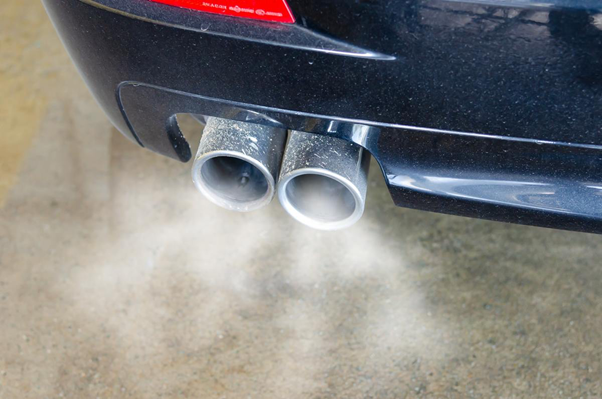How to Locate the Source of an Exhaust Leak

Experiencing abnormal vibrations or reduced fuel efficiency in your vehicle could indicate a potential exhaust leak, which can be hazardous due to harmful fumes. Here are seven urgent signs of an exhaust leak you shouldn’t ignore.
Signs of an a Exhaust Leak
1. Strong Gas Smell
A noticeable gas smell while driving could signify exhaust fumes entering the cabin, indicating a potential leak before or after the catalytic converter. If you detect exhaust in the cabin, it’s crucial to roll down your windows and exit the vehicle immediately for safety.
2. Loud Engine Noise
An exhaust leak often accompanies loud engine noises such as rumbling, hissing, or popping, particularly when accelerating. Keep in mind that malfunctioning mufflers can also produce similar sounds.
3. Unusual Vibrations
Exhaust gas escaping through damaged flange gaskets or exhaust piping can lead to vibrations in the steering wheel or gas pedal, indicating a possible leak.
4. Acceleration and Power Loss
An exhaust leak before the upstream oxygen sensor(O2 sensor) can cause elevated oxygen content readings, prompting the Engine Control Unit (ECU) to adjust the fuel mixture. This can result in misfires and reduced engine power, leading to sluggish acceleration despite pressing the gas pedal.
5. Carbon Buildup
The presence of black spots or carbon particles around the exhaust system indicates a potential leak, serving as visual indicators of the leak's location.
6. Lit Check Engine Light
An activated check engine light may indicate irregular oxygen sensor readings due to an exhaust leak, leading to the vehicle running rich or lean.
7. Reduced Fuel Economy
Leaking exhaust gases can negatively impact fuel economy, requiring more frequent trips to the gas station due to engine inefficiency.
Typical Causes of Exhaust Leaks
Several factors contribute to exhaust leaks, including wear and tear, rust or corrosion, physical damage from road conditions, worn-out gaskets, hangers, or isolators, and poor welding during previous auto repairs.
Methods to Locate the Exhaust Leak
To identify the source of the leak, you can employ the following methods:
1. Visual Inspection
Examine the exhaust system components, including the muffler, resonator, exhaust manifold, and tailpipe, for any signs of damage or corrosion.
2. Block the Exhaust with a Rag
Temporarily block the exhaust pipe with a rag and start the car. This will force more exhaust fumes out of the leak, making it easier to identify.
3. Spray Soapy Water
After the car cools down, spray soapy water on suspected areas of the exhaust system. If there's a leak, bubbles will form in the soapy water upon engine startup.
4. Use a Smoke Machine
Send smoke through the exhaust system using a smoke machine to visually identify the location of the leak.
Once you've located the exhaust leak, it's essential to address it promptly to avoid further damage. Small leaks can be temporarily fixed with sealants like muffler putty, exhaust tape, or exhaust band clamps. However, always prioritize safety and consult a mechanic if needed.